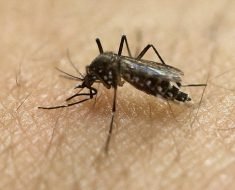
Low mood is experienced by 18.6% of adolescents, according to a study carried out by the Epi4Health interuniversity research group, involving the Universitat Oberta de Catalunya (UOC), the Manresa campus of the University of Vic—Central University of Catalonia (UVic-UCC) and the Universitat Autònoma de Barcelona (UAB). Based on data from the DESKcohort project led by UManresa, which studies the health and health-related behaviors of thousands of adolescent school children in central Catalonia, the researchers found that the prevalence of low mood is clearly unequal, affecting 11.6% of boys, and 25.1% of girls.
The research, which has been published in the Journal of Affective Disorders, was led by Helena González Casals, a member of teaching staff at UManresa, a researcher at UVic-UCC and Ph.D. student at the UOC on the Doctoral Program in Health and Psychology, supervised by Marina Bosque, the principal investigator of the Epi4Health group in the UOC’s Faculty of Health Sciences, affiliated to the eHealth Center, and Albert Espelt at the UAB.
“We observed gender inequalities in mental health among adolescents, with low mood 2.2 times more common among girls than among boys, and 36% of this difference is explained by social determinants and health behaviors,” said Dr. Bosque. The research was carried out using data from the DESKcohort project, which is based on a survey on health behavior that is performed in public and private secondary schools in central Catalonia every two years. The program began in the 2019/2020 academic year and collected data from 6,428 adolescents between 12 and 18 years old.
What is the reason for the difference?
The primary reason for these gender differences is contextual factors that are also related to mood. The sexual violence that girls experience plays a very important role, although another factor is that adolescent girls spend less time doing physical activity than boys (57% do not meet the minimum recommendations set by the WHO). In addition, being an immigrant, dieting and smoking on a daily basis were also associated with low mood only in girls, while high-risk alcohol consumption was only associated with low mood in boys.
As regards social exposure variables, a higher prevalence of low mood was observed in both boys and girls from disadvantaged socio-economic backgrounds. Having lower grades, engaging in problematic mobile phone use and having experienced bullying are other associated factors that do not seem to have any related gender differences. However, most of the gender differences in the prevalence of low mood are due to having experienced sexual violence.
Useful for prevention
According to the authors, these results can be useful for adopting preventive measures and identifying issues and symptoms before they deteriorate or become chronic, and change from low mood to more severe disorders, such as anxiety or depression. “Now we can determine the current situation as regards the mental health of adolescents and see what factors are related to it, and this means we can think about and implement preventive measures aimed at improving the mental health of this group which are much more comprehensive and have a greater impact,” González Casals said.
According to the researchers, the sample is very varied due to the characteristics of the territory, as adolescents from large towns like Manresa and Igualada participated, as well as others from smaller towns. “This means we can have a rough idea of what happens in other populations, and extrapolate the results of this study to the rest of the Catalan adolescent population”, said González Casals, while warning that this behavior may differ in big cities like Barcelona, where there are significant differences between neighborhoods and socio-economic levels.
The data for this research were collected during the 2019/2020 academic year, until the COVID-19 lockdown called a halt to the fieldwork. Since the pandemic seems to have had a clear impact on adolescents’ mental health, the Epi4Health team is currently analyzing data from the second round of the DESKcohort project (collected during the 2021/2022 academic year), in order to determine in detail the changes in this group’s mental health as a result of the pandemic. The team also aims to ascertain whether urban or rural environments have an influence, in order to outline specific actions or preventive interventions that are even more precise.
More information:
Helena Gonzalez-Casals et al, Gender inequalities in the prevalence of low mood and related factors in schooled adolescents during the 2019–2020 school year: DESKcohort project, Journal of Affective Disorders (2023). DOI: 10.1016/j.jad.2023.04.058
Journal information:
Journal of Affective Disorders
Source: Read Full Article





